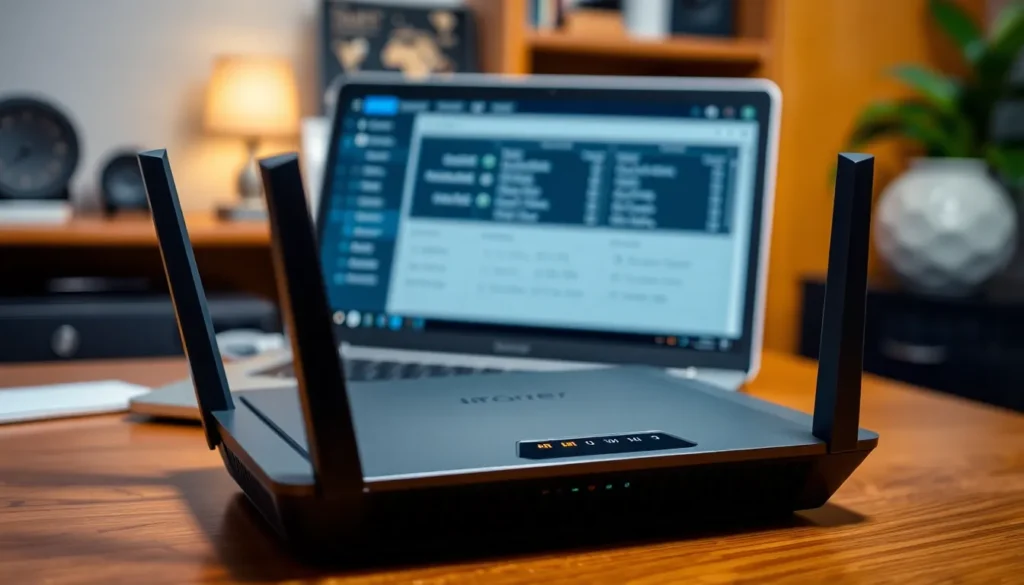Table of Contents
ToggleIn the realm of networking, understanding IP addresses is crucial for efficient communication and connectivity. Among these addresses, 192.168.7.5.8090 stands out, serving as a gateway for various devices within a local network. This unique combination of numbers not only identifies a device but also specifies a port, which is vital for routing data to the correct application.
As technology evolves, knowing how to navigate IP addresses and their associated ports can enhance network management and security. Whether it’s for troubleshooting connectivity issues or configuring devices, grasping the significance of addresses like 192.168.7.5.8090 empowers users to optimize their network experience. This article delves into the intricacies of this specific address, shedding light on its purpose and functionality in today’s digital landscape.
Overview of 192.168.7.5.8090
The IP address 192.168.7.5.8090 identifies a device within a local network, where “192.168.7.5” represents the specific device and “8090” serves as the port number. This combination allows seamless communication between devices. The port number 8090 often relates to web-based applications or services, enabling diverse functionalities.
Devices utilizing this address typically fall under the Class C network, which hosts a maximum of 254 addresses. 192.168.7.5 can connect various devices such as printers, security cameras, or routers, allowing configuration and management through a web interface.
Understanding the role of this IP address and its port enhances efficient data routing and application access. Network administrators leverage 192.168.7.5.8090 alongside other local addresses to streamline operations, ensure security, and troubleshoot effectively.
Accessing 192.168.7.5.8090
Accessing the address 192.168.7.5.8090 involves a few straightforward steps. Network administrators often utilize this process to configure devices or manage services effectively.
Steps to Connect
- Connect to the Network: Ensure the device connects to the local network where the IP address is assigned.
- Open a Web Browser: Launch a compatible web browser such as Chrome, Firefox, or Edge.
- Enter the Address: Type
http://192.168.7.5:8090in the browser’s address bar, including the protocol and port number. - Log In: If prompted, enter the required credentials (username and password) to access the device’s interface.
- Configure Settings: Navigate through the options available for configuration and management of the device or service.
Troubleshooting Connection Issues
- Check Network Connectivity: Verify that the device is properly connected to the network.
- Confirm IP Address: Ensure that 192.168.7.5 is the correct address for the device being accessed.
- Examine Port Number: Validate that the port number 8090 is open and not blocked by firewalls or security settings.
- Browser Compatibility: Test accessing the address using different web browsers in case of compatibility issues.
- Device Reboot: Restarting the device may resolve temporary connectivity problems.
Features of 192.168.7.5.8090
The address 192.168.7.5:8090 includes several features that enhance its functionality within local networks. These features include user interface design and security features that contribute to effective device management.
User Interface Design
User interface design in applications accessed via 192.168.7.5:8090 typically prioritizes usability and accessibility. Interfaces often present configuration options in a clear, organized manner, allowing users to manage device settings efficiently. Common elements include dropdown menus, toggles, and status indicators, which simplify navigation. Responsive design ensures compatibility across various devices, including smartphones and tablets. A well-structured layout facilitates quick access to critical functions such as device status, connection settings, and firmware updates.
Security Features
Security features associated with 192.168.7.5:8090 play a crucial role in protecting data and devices. Authentication protocols often require users to enter secure credentials before accessing configuration options. Encryption techniques safeguard data transmission, helping to prevent unauthorized access during communication. Built-in firewall settings can block non-essential traffic, minimizing risks from outside threats. Regular firmware updates enhance security by addressing vulnerabilities and adding features. Configurable security settings allow administrators to tailor access levels for different users, ensuring appropriate permissions for each role.
Common Usage Scenarios
192.168.7.5:8090 serves various practical applications within local networks.
- Device Configuration: Network administrators often utilize 192.168.7.5:8090 for configuring devices. This process typically includes setting up printers, routers, or security cameras, allowing for tailored network management.
- Accessing Web Interfaces: The address frequently hosts web-based applications. Users log into the interface for critical operations, including real-time monitoring and management of connected devices.
- Testing Network Connections: Technicians use 192.168.7.5:8090 to test connectivity between devices. This ensures that communication paths are clear, enabling seamless transfer of information across the local network.
- Monitoring Network Performance: Monitoring tools may connect to 192.168.7.5:8090 to provide insights on traffic loads and device status. Administrators can evaluate and optimize performance metrics, ensuring a responsive network.
- Implementing Security Measures: Security protocols often configure through 192.168.7.5:8090. Administrators customize firewalls and encryption settings, strengthening the local network against unauthorized access.
These scenarios illustrate the versatility and significance of 192.168.7.5:8090 in maintaining a robust and efficient local network environment.
Conclusion
Understanding the role of 192.168.7.5:8090 within a local network is crucial for effective network management. Its unique combination of IP address and port number facilitates seamless communication between devices and applications. By leveraging its features and security protocols, network administrators can enhance both functionality and safety.
The address serves as a vital tool for configuration and monitoring, making it indispensable in various scenarios. As technology evolves, staying informed about such addresses can significantly improve network performance and reliability. Embracing this knowledge empowers users to manage their networks with confidence and expertise.




